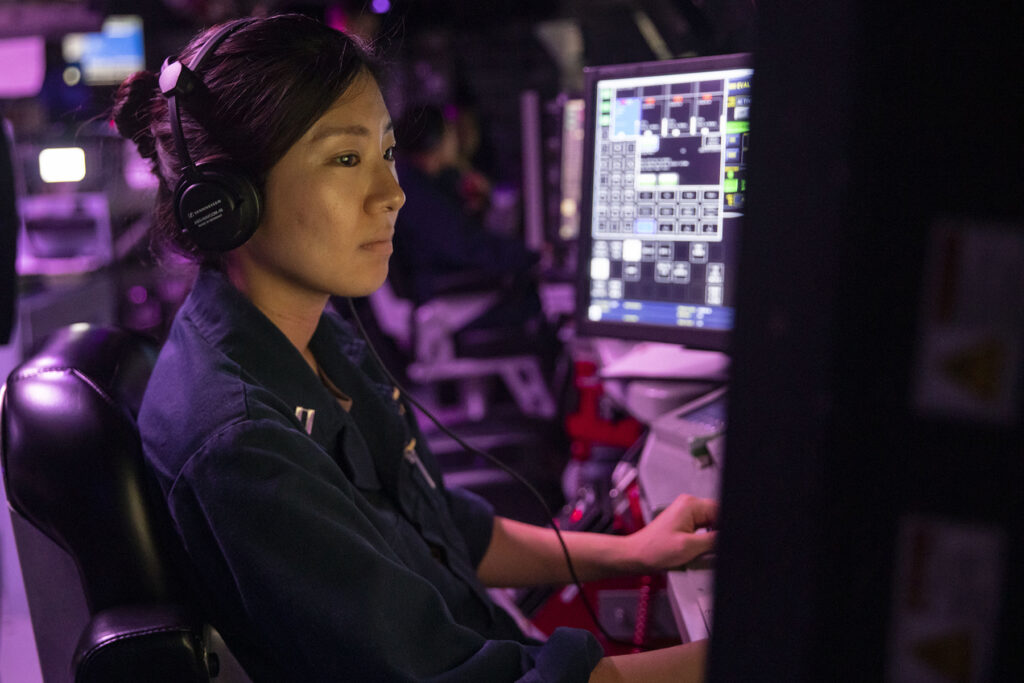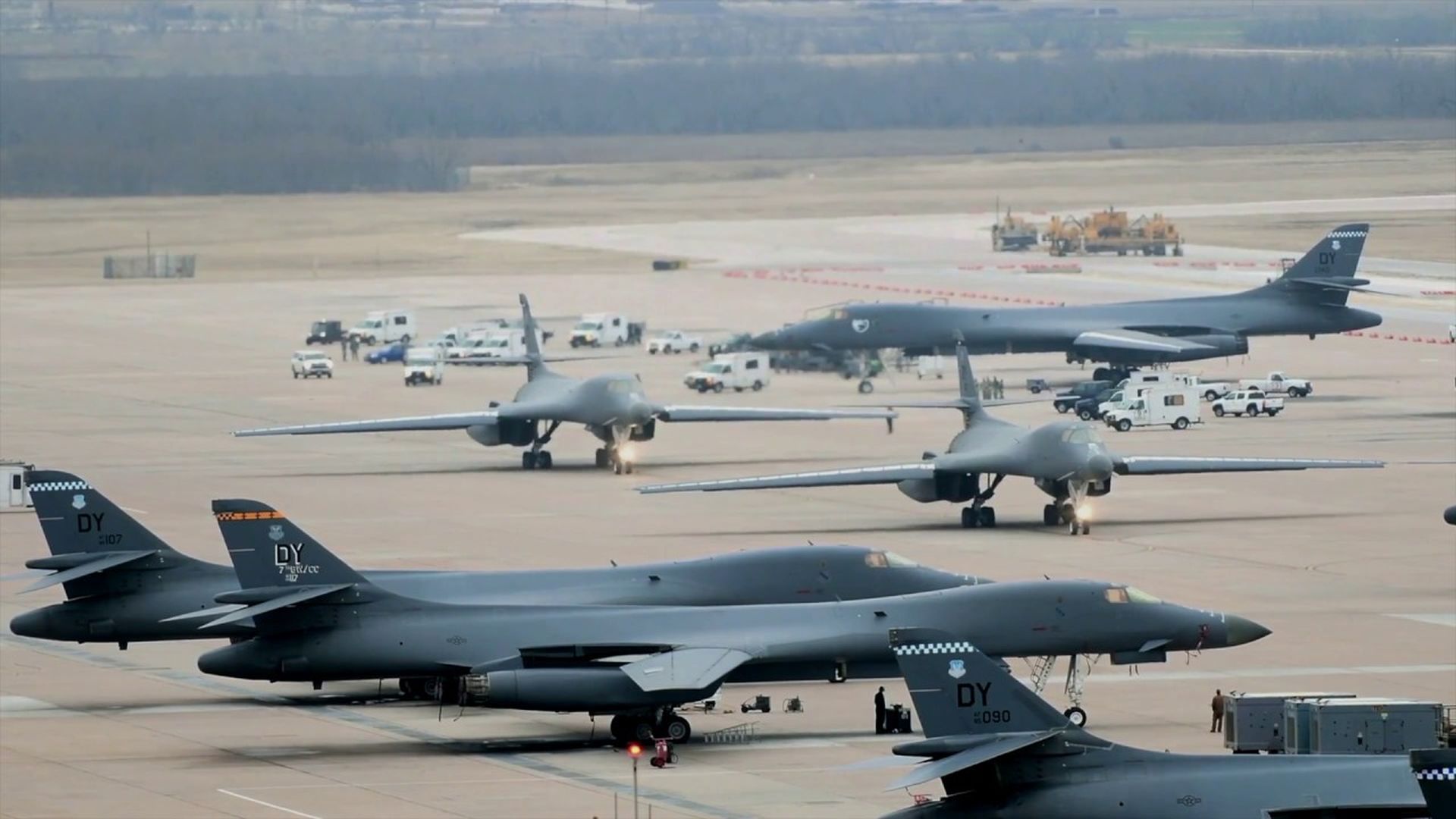PHILIPPINE SEA (July 12, 2023) Lt. Grace Choi, from Atlanta, searches for air contacts while standing watch in the combat information center aboard the Arleigh Burke-class guided-missile destroyer USS John Finn (DDG 113) during operations in the Philippine Sea, July 12, 2023. (U.S. Navy photo by Mass Communication Specialist 2nd Class Samantha Oblander)
In an era where rapid technological advancements shape the strategies of national defense, the armed forces must stay at the forefront of innovation. From multi-domain operations to the Joint All Domain Command and Control (JADC2) initiative, the emphasis is clear: harnessing technology for faster, more efficient, and smarter defense capabilities is not just desirable, it’s imperative.
Commercial computing technologies by leading Silicon Valley companies like Intel and NVIDIA are critical for edge processing, but must be ruggedized for successful deployment in austere environments. One of the technology leaders stepping up to the challenge is Systel, a rugged computer manufacturer based in Sugar Land, TX, with expertise integrating commercial technologies into rugged compute solutions for mission-critical applications in the harshest environments.
Systel’s Kite-Strike II product is an example of this. It’s a rugged mission computer that integrates the NVIDIA Jetson AGX Orin system-on-module (SOM) and is purpose-built for demanding computer vision and sensor fusion data processing workloads for edge AI and autonomous mission-critical applications.
We discussed its development and applications with Systel President Aneesh Kothari.
Breaking Defense: Systel’s Kite-Strike II edge-deployed computing solution is one of the first products available to leverage NVIDIA’s Jetson AGX Orin. Tell us about Kite-Strike II and AGX Orin.
Kothari: Kite-Strike II is a small-form-factor (SFF), MIL-SPEC rugged and embedded edge-compute solution which integrates the NVIDIA Jetson AGX Orin. The NVIDIA AGX Orin is a powerful AI edge computer that provides up to 275 TOPS (trillion operations per second) of AI performance, making it ideal for autonomous systems. NVIDIA’s Jetson product line of AI processors has been leading the market for several years and the AGX Orin is the company’s flagship Jetson offering.
Kite-Strike II is designed as a single line replaceable unit (LRU) with a hyperconvergence design approach, combining compute, storage, and networking into a single system. Kite-Strike II is fully configurable and modular with an expansion slice-based design that allows for rapid engineering cycles and faster time to deployment.

Systel’s Kite-Strike II is a rugged mission computer that integrates the NVIDIA Jetson AGX Orin system-on-module, and is purpose-built for computer vision and sensor fusion data processing for edge AI and autonomy.
Breaking Defense: In what ways is it one of the first products to leverage AGX Orin?
Kothari: Systel was first to market globally with a fully rugged AGX Orin compute solution, launching Kite-Strike II in October of 2022 at the AUSA Annual Meeting and Exposition in Washington, D.C. At that time, it was awarded the Four-Star Best in Show Embedded Computing award from Military Embedded Systems. It was also selected as the Platinum Honoree for the 2023 Military + Aerospace Electronics Innovators Awards.
By taking the latest Silicon Valley edge AI technology and ruggedizing it into a highly compact and modular system, Systel has been able to help solve emerging problem sets for autonomous warfare systems and applications that require on-prem AI computing in highly space- constrained platforms.
Breaking Defense: How did it get to be so, in other words, how is it that you developed something that could work with a product from NVIDIA that hadn’t been introduced yet?
Kothari: Over the past few years, Systel has invested in developing a disruptive approach to defense contracting, bringing products not PowerPoints to customers by identifying problem spaces and engaging in product innovation to bring the right solutions to market at the right time, with COTS technologies integrated and ruggedized into leading edge compute solutions.
Systel is an NVIDIA Preferred Partner and works closely with NVIDIA and its ecosystem while staying in lockstep with its product map, allowing us to bring a product like Kite-Strike II to market in near real-time with NVIDIA’s launch of the AGX Orin.
The interest we have received from industry for Kite-Strike II has been tremendous and especially gratifying for us as it helps validate our new-product-introduction approach, working hand in hand with commercial technology partners like NVIDIA and end users throughout the development process to ensure we are bringing capabilities to market that solve problems and enable mission success.
Breaking Defense: What does all this mean to warfighters?
Kothari: It means we are able to support the warfighter with cutting edge technologies at the speed of commercial development cycles instead of lagging generations behind, accelerating the fielding of disruptive tech.
By developing Kite-Strike II through internal research and development funding and using lean and agile methodologies with continuous voice-of-the-customer feedback loops as the driving mechanism for product requirements and spiral development, we were able to bring Kite-Strike II to market at the same pace and at about the same time as its AGX Orin underlying technology.
This results in overall reduced risk for programs with more time available for customers to develop and test their algorithms on the actual hardware and integrate it onto their platforms before going to low-rate or full-rate production without schedule impact.
Breaking Defense: What are the benefits of COTS products and in what particular defense systems are we talking about?
Kothari: COTS products offer numerous benefits for defense systems, especially when integrated with a Modular Open Systems Approach. Leveraging proven and available technologies reduces the need for extensive and costly development and testing, resulting in significant risk and cost reductions. Using COTS products allows for rapid integration, reducing the time from concept to deployment.
Systel supports defense systems across all service branches with a modified-COTS (M-COTS) product approach, providing modular, configurable, and rugged compute solutions, integrating the latest commercially available technologies that adhere to widely used industry standards. This allows for easy integration without proprietary architectures or interfaces, and enhances flexibility, reduces costs, and ensures interoperability and maintainability. We believe this approach provides the best value to the warfighter and the taxpayer.





















Discussion about this post